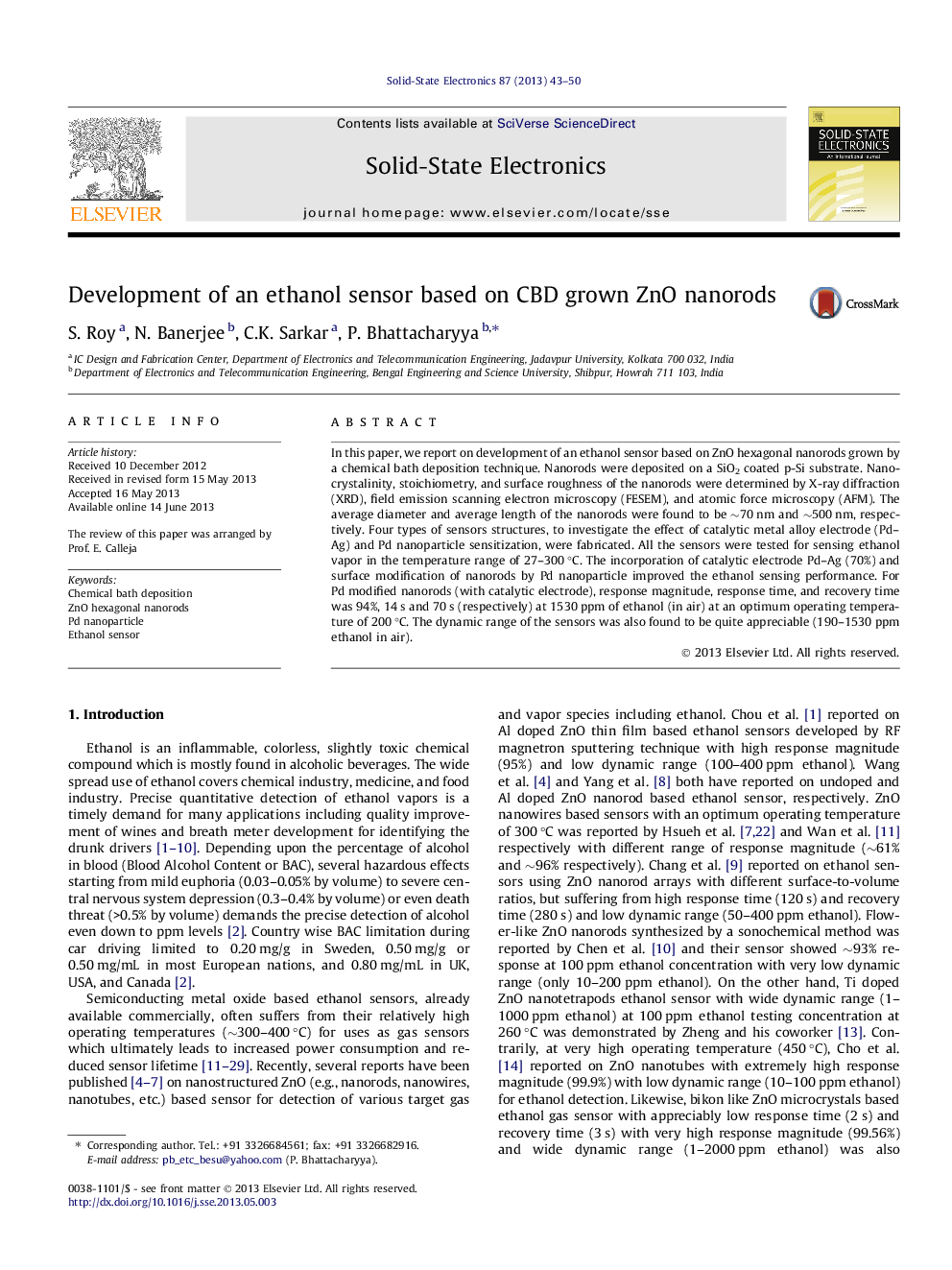| Article ID | Journal | Published Year | Pages | File Type |
|---|---|---|---|---|
| 752796 | Solid-State Electronics | 2013 | 8 Pages |
•CBD grown ZnO hexagonal nanorods have relative low temperature for ethanol sensing (about 200 °C).•Pd surface modification of ZnO nanorods and Pd–Ag catalytic electrode improved ethanol sensor performance.•The dynamic range of a sensor was found to be quite appreciable (190–1530 ppm ethanol).
In this paper, we report on development of an ethanol sensor based on ZnO hexagonal nanorods grown by a chemical bath deposition technique. Nanorods were deposited on a SiO2 coated p-Si substrate. Nanocrystalinity, stoichiometry, and surface roughness of the nanorods were determined by X-ray diffraction (XRD), field emission scanning electron microscopy (FESEM), and atomic force microscopy (AFM). The average diameter and average length of the nanorods were found to be ∼70 nm and ∼500 nm, respectively. Four types of sensors structures, to investigate the effect of catalytic metal alloy electrode (Pd–Ag) and Pd nanoparticle sensitization, were fabricated. All the sensors were tested for sensing ethanol vapor in the temperature range of 27–300 °C. The incorporation of catalytic electrode Pd–Ag (70%) and surface modification of nanorods by Pd nanoparticle improved the ethanol sensing performance. For Pd modified nanorods (with catalytic electrode), response magnitude, response time, and recovery time was 94%, 14 s and 70 s (respectively) at 1530 ppm of ethanol (in air) at an optimum operating temperature of 200 °C. The dynamic range of the sensors was also found to be quite appreciable (190–1530 ppm ethanol in air).
